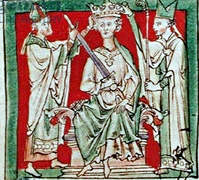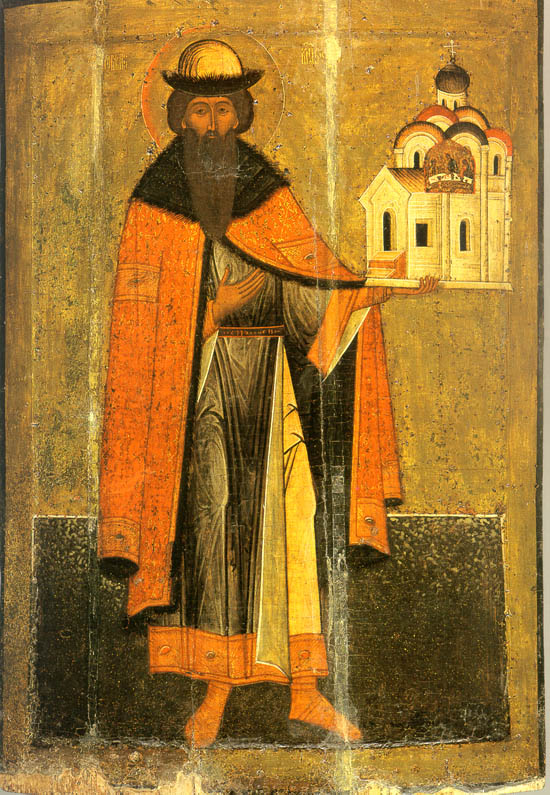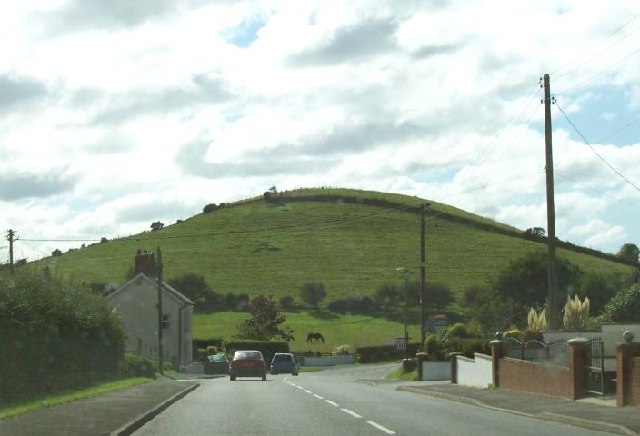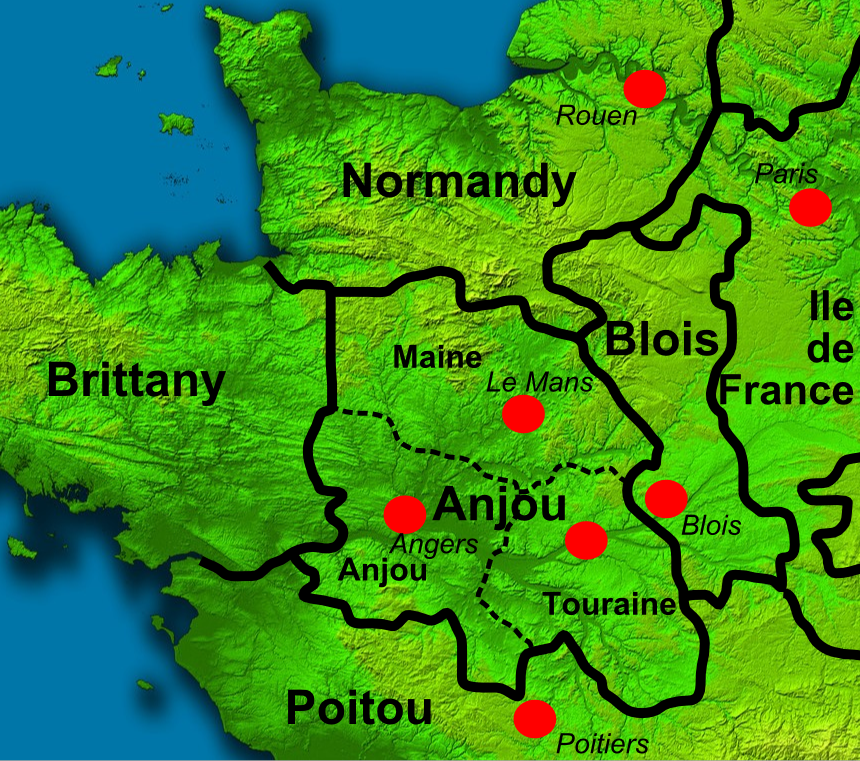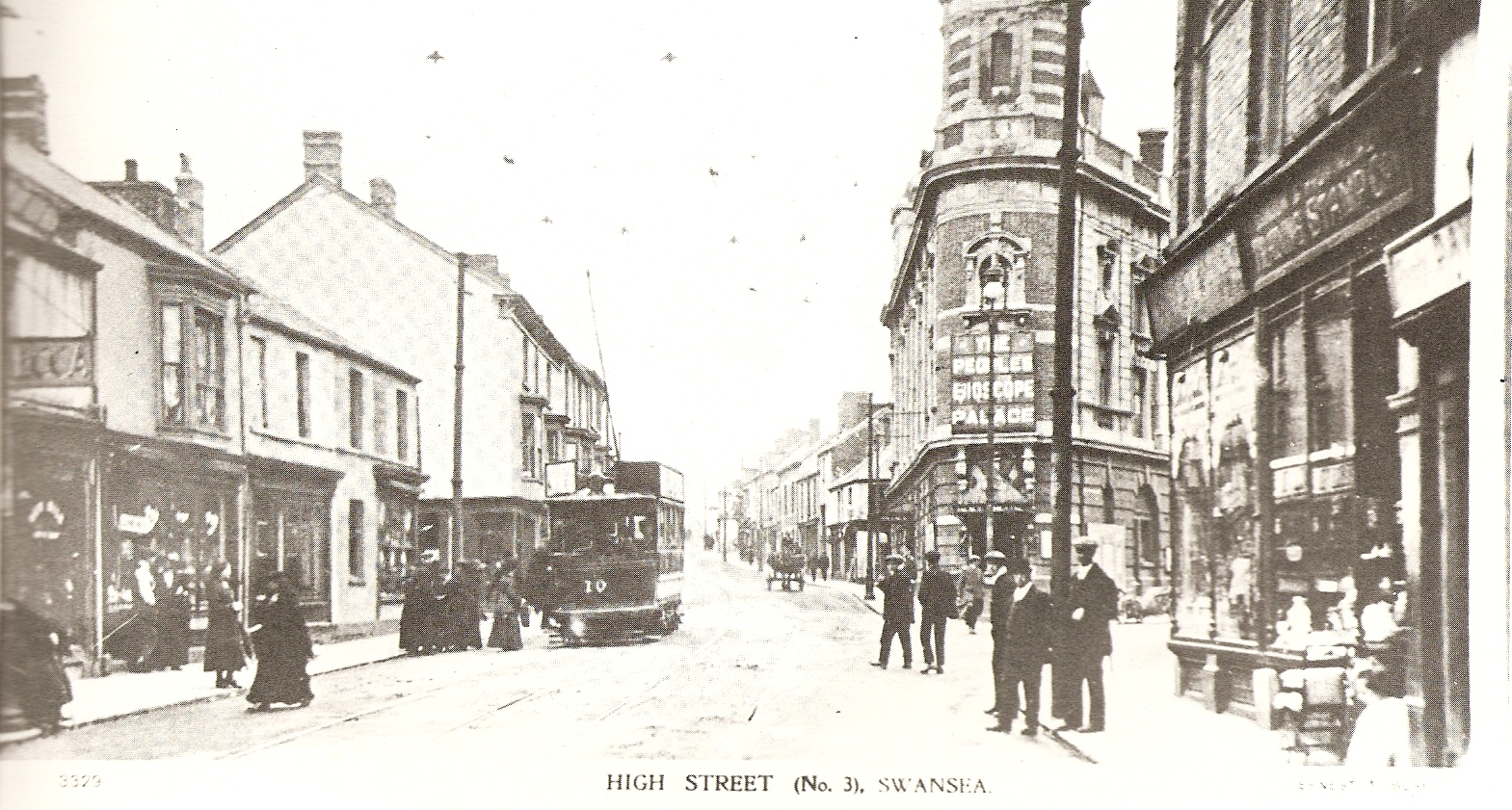|
Battle Of Llwchwr
The Battle of Llwchwr (or Battle of Gower) was fought between Welsh and Norman forces between Loughor and Swansea on New Year's Day 1136. Background In 1135–1136 an opportunity arose for the Welsh to recover lands lost to the Marcher lords after Stephen de Blois had displaced his cousin Matilda of England from succeeding her father to the English throne the previous year, sparking the Anarchy in England. The battle A Welsh army was raised by the lord of Brycheiniog (Brecknockshire), Hywel ap Maredudd, containing men from Brycheiniog as well as men from Northern Gŵyr that despised the Norman rule in Southern Gŵyr. The Normans sallied out expecting to meet a small collection of Welsh raiding bands, however the scale of the Welsh army took them by surprise. The two armies met on the common of Carn Coch. In a violent melee, the Welsh army emerged victorious, the Normans having lost around 500 men. Aftermath The victory of the Welsh army inspired more rebellions around Wa ... [...More Info...] [...Related Items...] OR: [Wikipedia] [Google] [Baidu] |
Norman Invasion Of Wales
The Norman invasion of Wales began shortly after the Norman Conquest, Norman conquest of England under William the Conqueror, who believed England to be his birthright. Initially (1067–1081), the invasion of Wales was not undertaken with the fervour and purpose of the invasion of England. However, a much stronger Norman invasion began in 1081 and by 1094 most of Wales was under the control of William's son and heir, the later King William II of England, William II. The Welsh greatly disliked the "gratuitously cruel" Normans, and by 1101, had regained control of the greater part of their country under the long reign of King Gruffudd ap Cynan, who had been imprisoned by the Normans for twelve years before his escape. In one incident, Gruffudd had some indirect help from King Magnus III of Norway (Magnus Barefoot) who attacked the Normans briefly off the Isle of Anglesey in northwest Wales near Puffin Island, Anglesey, Ynys Seiriol, killing Hugh of Montgomery, 2nd Earl of Shrewsbur ... [...More Info...] [...Related Items...] OR: [Wikipedia] [Google] [Baidu] |
The Anarchy
The Anarchy was a civil war in England and Duchy of Normandy, Normandy between 1138 and 1153, which resulted in a widespread breakdown in law and order. The conflict was a war of succession precipitated by the accidental death of William Adelin (the only legitimate son of Henry I of England, Henry I), who drowned in the White Ship disaster, ''White Ship'' disaster of 1120. Henry sought to be succeeded by his daughter, known as Empress Matilda, but was only partially successful in convincing the nobility to support her. On Henry's death in 1135, his nephew Stephen of Blois seized the throne with the help of Stephen's brother Henry of Blois, who was the bishop of Winchester. He was crowned as Stephen, King of England, King Stephen, and his early reign saw fierce fighting with disloyal English barons, rebellious Welsh leaders, and Scottish invaders. Following a major rebellion in the southwest of England, Matilda invaded in 1139 with the help of her half-brother Robert, 1st Earl o ... [...More Info...] [...Related Items...] OR: [Wikipedia] [Google] [Baidu] |
Battles Involving The Normans
A battle is an occurrence of combat in warfare between opposing military units of any number or size. A war usually consists of multiple battles. In general, a battle is a military engagement that is well defined in duration, area, and force commitment. An engagement with only limited commitment between the forces and without decisive results is sometimes called a skirmish. The word "battle" can also be used infrequently to refer to an entire operational campaign, although this usage greatly diverges from its conventional or customary meaning. Generally, the word "battle" is used for such campaigns if referring to a protracted combat encounter in which either one or both of the combatants had the same methods, resources, and strategic objectives throughout the encounter. Some prominent examples of this would be the Battle of the Atlantic, Battle of Britain, and the Battle of France, all in World War II. Wars and military campaigns are guided by military strategy, whereas batt ... [...More Info...] [...Related Items...] OR: [Wikipedia] [Google] [Baidu] |
History Of Glamorgan
History is the systematic study of the past, focusing primarily on the Human history, human past. As an academic discipline, it analyses and interprets evidence to construct narratives about what happened and explain why it happened. Some theorists categorize history as a social science, while others see it as part of the humanities or consider it a hybrid discipline. Similar debates surround the purpose of history—for example, whether its main aim is theoretical, to uncover the truth, or practical, to learn lessons from the past. In a more general sense, the term ''history'' refers not to an academic field but to the past itself, times in the past, or to individual texts about the past. Historical research relies on Primary source, primary and secondary sources to reconstruct past events and validate interpretations. Source criticism is used to evaluate these sources, assessing their authenticity, content, and reliability. Historians strive to integrate the perspectives o ... [...More Info...] [...Related Items...] OR: [Wikipedia] [Google] [Baidu] |
1136 In Wales
Year 1136 ( MCXXXVI) was a leap year starting on Wednesday of the Julian calendar. Events By place Levant * Spring – Raymond of Poitiers, son of the late Duke William IX of Aquitaine, arrives at Antioch. Patriarch Ralph of Domfront (against the wishes of Princess Alice) arranges a marriage in secret with her 8-year-old daughter Constance. She is kidnapped and taken to the cathedral in Antioch, where Ralph hastily marries her to Raymond. Alice leaves the city, now under the control of Raymond and Ralph, and retires to Latakia, Syria.Steven Runciman (1952). ''A History of The Crusades. Vol II: The Kingdom of Jerusalem'', p. 160. . * August 17 – Al-Rashid is deposed after a 1-year reign and flees to Isfahan (modern Iran). He is succeeded by his uncle Al-Muqtafi who becomes the new caliph of the Abbasid Caliphate in Baghdad (until 1160). Europe * May 28 – In Russia, the people of Novgorod depose and imprison Prince Vsevolod of Pskov. Novgorod assert ... [...More Info...] [...Related Items...] OR: [Wikipedia] [Google] [Baidu] |
Battle Of Crug Mawr
The Battle of Crug Mawr (), sometimes referred to as the Battle of Cardigan, took place in September or October 1136, as part of a Norman invasion of Wales, struggle between the Welsh people, Welsh and Normans for control of Ceredigion, West Wales. The battle was fought near Penparc, northeast of Cardigan, Ceredigion, Cardigan, probably on the hill now known as Banc-y-Warren; it resulted in a rout of the Norman forces, setting back their expansion in West Wales for some years. Background A Welsh revolt against Normans, Norman rule had begun in South Wales, where on 1 January 1136 the Welsh won a victory over the local Norman forces at the Battle of Llwchwr between Loughor and Swansea, killing about 500 of their opponents. Richard Fitz Gilbert de Clare, the Norman lord of Ceredigion, had been away from his lordship in the early part of the year. Returning to the borders of Wales in April, he ignored warnings of the danger and pressed on towards Ceredigion with a small force. He ... [...More Info...] [...Related Items...] OR: [Wikipedia] [Google] [Baidu] |
Gwenllian Ferch Gruffydd
Gwenllian ferch Gruffydd () (''Gwenllian, daughter of Gruffydd''; 1097 – 1136) was a 12th-century Welsh rebel and Princess of Deheubarth. The daughter of Prince of Gwynedd Gruffudd ap Cynan and member of the House of Aberffraw, she married Gruffydd ap Rhys, the Prince of Deheubarth, and would lead a "patriotic revolt" with him during the Great Revolt of 1136 until her death at the battle at Kidwelly Castle. Her death would serve as a rallying cry for Welsh rebels, and she became a symbol of Welsh independence. There are several notable artistic depictions of Gwenllian, often depicting her with a sword in hand, or riding a chariot into battle in the style of Boudicca. She is sometimes confused with Gwenllian ferch Llywelyn, who lived two centuries later. Early life Gwenllian was the youngest daughter of Gruffudd ap Cynan, Prince of Gwynedd, and his wife, Angharad. She was born on Ynys Môn (now also known as Anglesey) at the family seat at Aberffraw, and was the youn ... [...More Info...] [...Related Items...] OR: [Wikipedia] [Google] [Baidu] |
Brecknockshire
Brecknockshire ( or ), also known as the County of Brecknock, Breconshire, or the County of Brecon, was Historic counties of Wales, one of the thirteen counties of Wales that existed from 1536 until their abolishment in 1974. It was created in 1536 under the Laws in Wales Act 1535, and from 1889 it was an History of local government in Wales, administrative county with a county council; the administrative county was abolished in 1974. The county was named after the medieval Welsh territory of Brycheiniog, which was Anglicisation of names, anglicised to "Brecknock" and also gave its name to the county town of Brecon. The former county's area is mountainous and primarily rural. Geography Brecknockshire was bounded to the north by Radnorshire, to the east by Herefordshire and Monmouthshire (historic), Monmouthshire, to the south by Monmouthshire and Glamorgan, and to the west by Carmarthenshire and Ceredigion, Cardiganshire. The county is predominantly rural and mountainous. The B ... [...More Info...] [...Related Items...] OR: [Wikipedia] [Google] [Baidu] |
Matilda Of England
Empress Matilda (10 September 1167), also known as Empress Maud, was one of the claimants to the English throne during the civil war known as the Anarchy. The daughter and heir of Henry I, king of England and ruler of Normandy, she went to Germany as a child when she was married to the future Holy Roman Emperor Henry V. She travelled with the emperor to Italy in 1116, was controversially crowned empress in St Peter's Basilica, and acted as the imperial regent in Italy. Matilda and Henry V had no children, and when he died in 1125, the imperial crown was claimed by his rival Lothair of Supplinburg. Matilda's younger and only full brother, William Adelin, died in the ''White Ship'' disaster of 1120, leaving Matilda's father and realm facing a potential succession crisis. Upon her widowhood in the Holy Roman Empire, Matilda was recalled to Normandy by her father, who arranged for her to marry Geoffrey of Anjou to form an alliance to protect his southern borders in France. He ... [...More Info...] [...Related Items...] OR: [Wikipedia] [Google] [Baidu] |
Brycheiniog
Brycheiniog was an independent kingdom in South Wales in the Early Middle Ages. It often acted as a buffer state between England to the east and the south Welsh kingdom of Deheubarth to the west. It was conquered and pacified by the Normans between 1088 and 1095, though it remained Welsh in character. It was transformed into the Lordship of Brecknock and later formed the southern and larger part of the historic county of Brecknockshire. To its south was the Kingdom of Morgannwg. The main legacy of the kingdom of Brycheiniog is etymological and geographical. It is used in ''Bannau Brycheiniog'', the Welsh name for the Brecon Beacons range and, since 2023, in name used for the range's national park. Its name is also the origin to the anglicised names ''Brecknockshire'' (retained in Welsh as , ), and '' Brecon'' (otherwise known as in Welsh). History Origins The kingdom of Brycheiniog was probably founded by Irish raiders in the late fifth century, very likely the U ... [...More Info...] [...Related Items...] OR: [Wikipedia] [Google] [Baidu] |
Stephan Of England
Stephen (1092 or 1096 – 25 October 1154), often referred to as Stephen of Blois, was King of England from 22 December 1135 to his death in 1154. He was Count of Boulogne ''jure uxoris'' from 1125 until 1147 and Duke of Normandy from 1135 until 1144. His reign was marked by the Anarchy, a civil war with his cousin and rival, the Empress Matilda, whose son, Henry II, succeeded Stephen as the first of the Angevin kings of England. Stephen was born in the County of Blois in central France as the fourth son of Stephen-Henry, Count of Blois, and Adela, daughter of William the Conqueror. His father died as a crusader while Stephen was still young, and he was brought up by his mother. Placed into the court of his uncle Henry I of England, Stephen rose in prominence and was granted extensive lands. He married Matilda of Boulogne, inheriting additional estates in Kent and Boulogne that made the couple one of the wealthiest in England. Stephen narrowly escaped drowning with Henry I's s ... [...More Info...] [...Related Items...] OR: [Wikipedia] [Google] [Baidu] |
Swansea
Swansea ( ; ) is a coastal City status in the United Kingdom, city and the List of urban areas in the United Kingdom, second-largest city of Wales. It forms a Principal areas of Wales, principal area, officially known as the City and County of Swansea (). The city is the List of cities in the United Kingdom, twenty-eighth largest in the United Kingdom. Located along Swansea Bay in south-west Wales, with the principal area covering the Gower Peninsula, it is part of the Swansea Bay (region), Swansea Bay region and part of the Historic counties of Wales, historic county of Glamorgan and the ancient Welsh commote of Gŵyr. The principal area is the second most List of Welsh principal areas by population, populous local authority area in Wales, with an estimated population of in . Swansea, along with Neath and Port Talbot, forms the Swansea urban area, with a population of 300,352 in 2011. It is also part of the Swansea Bay City Region. During the 19th-century industrial heyday, ... [...More Info...] [...Related Items...] OR: [Wikipedia] [Google] [Baidu] |
